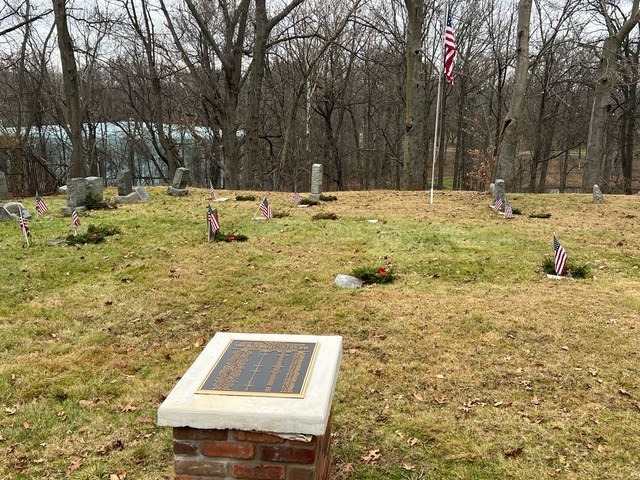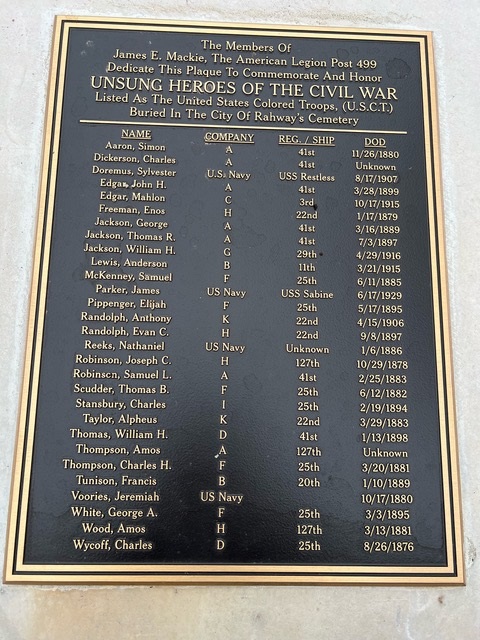
A Tribute to Rahway Soldiers
Submitted by Al Shipley, City Historian and Rahway Library Research Consultant
The assault on Fort Sumter took place on April 12, 1861, starting a bloody war that would last four long years. Most thought the war would be over in a few short months with limited loss of lives, property, or finances. By the end of the first year, however, reality had set in. With the realization that a long conflict was looming, President Abraham Lincoln decided that it was not only necessary but also vital for the North to enlist black men into the army. With pressure and personal council from leading abolitionists including Frederick Douglass, the President knew that if blacks were allowed to fight, it would help to cripple the economy of the South. He also believed that the black soldiers would make outstanding fighters and had a special cause that would drive their efforts. Lincoln signed the Emancipation Proclamation on January 1, 1863, and five months later, on May 22nd, the recruitment of United States Colored Troops began in full force.
The men who made up the USCT comprised a diverse group. Some were former slaves, others were freemen, some were young, some older, yet they all shared a common bond of unity as they fought for their individual states and the Union. Over 209,000 men of color, enough to fill 175 regiments would eventually enlist, making up one-tenth of the entire Union Army. Many black men from this area were mustered into the 22nd, 25th, 41st, and 127th regiments. Their actions would prove to bolster the Union war effort at the most critical time.

The service records of the 22nd and 127th regiments are especially worthy of review. The two highly decorated regiments were active in the siege operations against Petersburg and Richmond (June 16, 1864 – April 2, 1865), the Battle of Dutch Gap (August, 1864), Chaffin’s Farm (September, 1864), and the Battle of Fair Oaks (October, 1864). A specific instance of the regiment’s bravery in battle was illustrated on June 15, 1864, when it was reported that “the men of the 22nd met the enemy near Baylor’s farm as Confederate shells were tearing up the troops. The advancing Union lines began to fall back and were only saved when the 22nd Regiment led a charge and joining with the 5th USCT drove the Confederates from their position, captured one gun, and saved the division’s honor.”
The two regiments were later honored when they were selected to be part of the first group of Union troops to march into Richmond and occupy the Confederate capital on April 3, 1865. A part of the regiment was on duty at Appomattox Court House on April 9, 1865, when Confederate General Robert E. Lee surrendered. The regiment also participated as part of the escort at the funeral of President Lincoln, and days later were part of the group pursuing the President’s assassin.
Over the duration of the Civil War, more than 530 young men who called Rahway home would join the fight, of which over 50 were men of color. Of the 305 Civil War soldiers who are buried in the historic Rahway Cemetery, 29 were members of the USCT. Four of them, Evan C. Randolph, Peter Robinson, Joseph Freeman, and Enos Freeman were part of the 22nd, a regiment that was the second most highly decorated unit of the USCT. (Note: The 54th Massachusetts, the unit on which the movie “Glory” was based, was the most highly decorated).
The bravery and sacrifice of the United States Colored Troops during one of the most tumultuous events in our country’s history should not go unnoticed. It is important that all Americans know their story.

